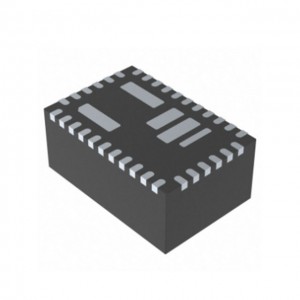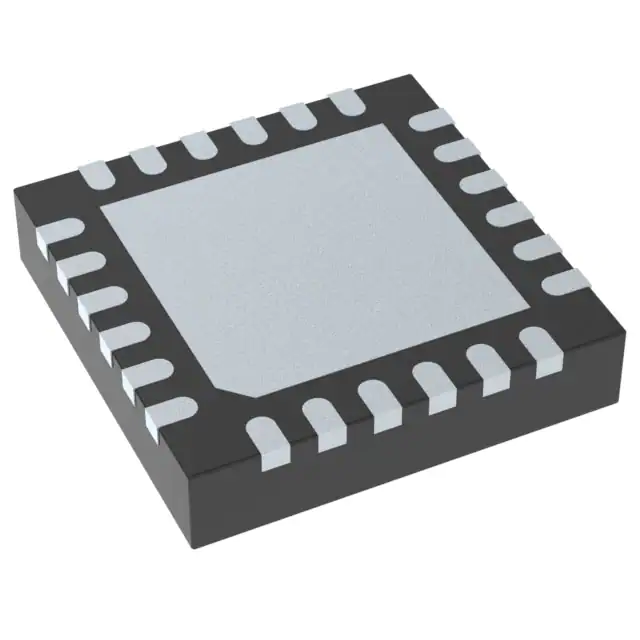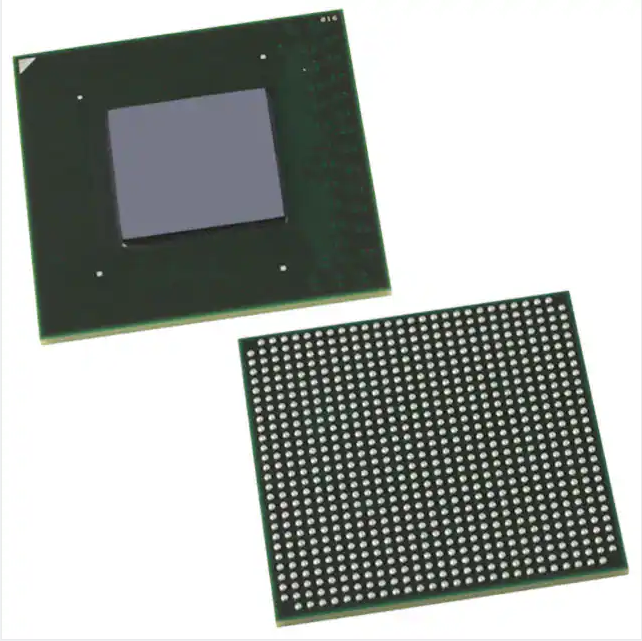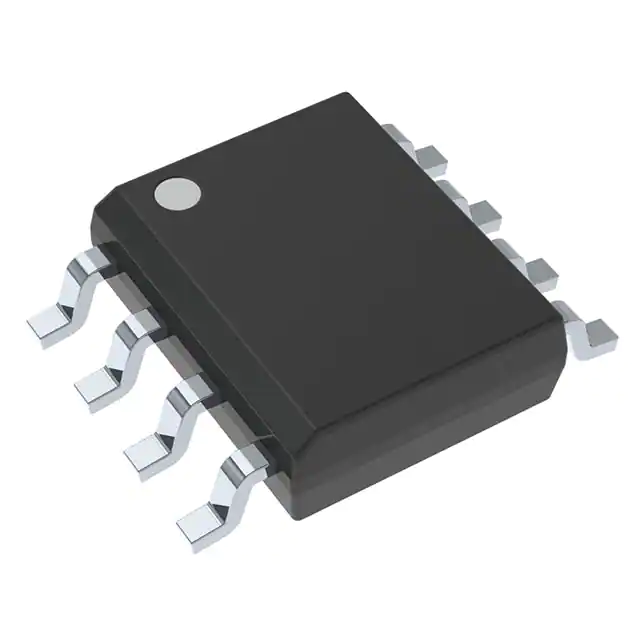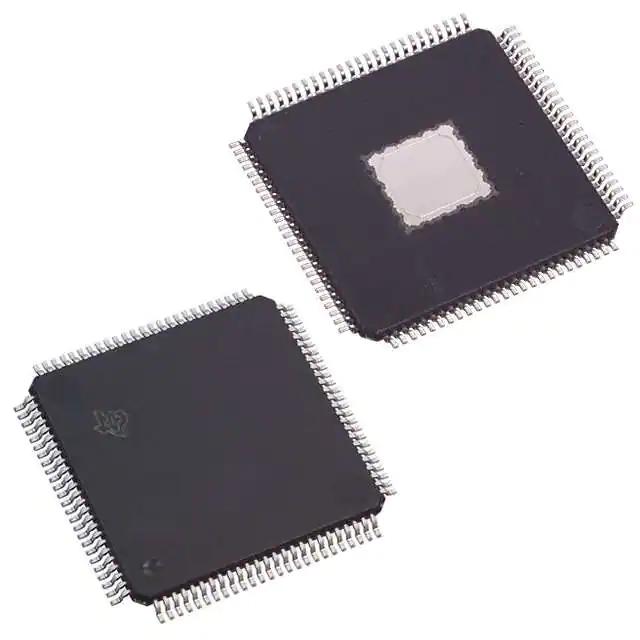New and Original EN6363QI Integrated circuit
Product Attributes
| TYPE | DESCRIPTION |
| Category | Power Supplies – Board MountDC DC Converters |
| Mfr | Intel |
| Series | Enpirion® |
| Package | Tape & Reel (TR)Cut Tape (CT)Digi-Reel® |
| Product Status | Obsolete |
| Type | Non-Isolated PoL Module |
| Number of Outputs | 1 |
| Voltage – Input (Min) | 2.7V |
| Voltage – Input (Max) | 6.6V |
| Voltage – Output 1 | 0.75 ~ 6.12V |
| Voltage – Output 2 | - |
| Voltage – Output 3 | - |
| Voltage – Output 4 | - |
| Current – Output (Max) | 6A |
| Applications | ITE (Commercial) |
| Features | Remote On/Off, OCP, OTP, SCP, UVLO |
| Operating Temperature | -40°C ~ 85°C |
| Efficiency | 95% |
| Mounting Type | Surface Mount |
| Package / Case | 34-PowerBFQFN Module |
| Size / Dimension | 0.24″ L x 0.16″ W x 0.10″ H (6.0mm x 4.0mm x 2.5mm) |
| Supplier Device Package | 34-QFN (4×6) |
| Control Features | Enable, Active High |
| Base Product Number | EN6363 |
Documents & Media
| RESOURCE TYPE | LINK |
| Datasheets | EN6363QI |
| Product Training Modules | Enpirion® EN6340QI and EN6363QI DC-DC Step-Down Power-SoC |
| Featured Product | EN6362 and EN6382 PowerSoCs DC-DC Step-Down Converters |
| PCN Obsolescence/ EOL | Multi Dev obs 01/Jul/2022Mult Dev EOL 17/Sep/2021Mult Dev EOL Update 27/Jan/2022 |
| PCN Packaging | Mult Dev Label Chgs 24/Feb/2020Mult Dev Label CHG 24/Jan/2020 |
| HTML Datasheet | EN6363QI |
| EDA Models | EN6363QI by Ultra Librarian |
Environmental & Export Classifications
| ATTRIBUTE | DESCRIPTION |
| RoHS Status | RoHS Compliant |
| Moisture Sensitivity Level (MSL) | 3 (168 Hours) |
| REACH Status | REACH Unaffected |
| ECCN | EAR99 |
| HTSUS | 8542.39.0001 |
Intel EN6363QI PowerSoC DC-DC Step-Down Converter delivers an outstanding combination of power density and conversion efficiency. This converter integrates power switches, inductor, gate drive, controller, and compensation in a small 8 x 8mm QFN package. The EN6363QI converter provides a low-risk solution with excellent FIT rates and improves the system reliability versus discrete power supply solutions. This converter delivers excellent conversion efficiency up to 96%. Basic applications of this converter include space-constrained applications and 5V/3.3V bus architectures.
What Is Power Supply?
Since the industrial revolution, electricity has been in demand as populations grow and cultures expand. The ability to use electricity to do work has revolutionized technology, communication, work, and society at large. From lightbulbs to home heating and cooling, to the way food is stored and transported, to technological devices, the world today runs on electricity. However, there remains a fundamental challenge when it comes to how society powers all of the devices and systems that now depend on electricity. Objects and systems that require electricity are dependent on a power supply.
This lesson discusses what a power supply is, and the different methods and sources used today to power the electronic world. This lesson also discusses several types of power supplies and their different applications in the world today.
3.1K views
Power Supply Definition
A power supply is a device that supplies and modifies the output of energy to meet the energy demands of a device that needs electrical power. The power that is generated through various methods must be adapted to meet the requirements of the output; often the input amount of power is too large for everyday use.
It helps to think of electricity as water, and the wires along which electricity travels as hoses of various sizes. The power that is generated at a facility is like hooking a large hose up to a river. The power used to charge a phone, run a toaster, and even switch on the lights requires a significantly smaller hose size. A power supply is much like a hose adapter and changes the amount of power that can come through.
There are several different units of measurement used for measuring electricity, and it is important to understand the variations when discussing how electricity powers the devices of the world. Electricity is simply a flow of electrons along with a conductive current. Three units are commonly used to describe electricity. Amplitude, or amps (A), references the base unit of measurement that describes the amount of electricity present. Volts (V) describes the speed of the electricity as it travels through conductive material, usually in the form of copper wire. Watts describes the rate at which the electricity flows. When one watt flows through a conductive material at the speed of one volt, it equals one amp.
Power Sources
Power supplies need a source of power to function, like a garden hose needing a source of water. The definition of a power source, or energy source, is a method of producing electricity. Power sources convert either mechanical or chemical energy into electrical energy which is then used by the circuitry of a device to power that device. Today, there are several ways electricity is produced, categorized by how sustainable the resource used in each method is.
Types of Power Sources
Non-renewable resources use resources that are not naturally replenished in an average human lifetime and include the use of fossil fuels. Fossil fuels include crude oil, natural gas, and coal, and are burned through a variety of methods to produce electricity. Fossil fuels are considered non-renewable because the process that creates fossil fuels takes place over millions of years. Fossil fuels are made from the decomposed and chemically changed remains of ancient plants and animals that lived even before dinosaurs roamed the Earth. After death, the remains of these organisms were buried under millions of years of sediment and water, compressed, and chemically changed into oil, natural gas, and coal. Because it will take millions of years to produce more fossil fuels, their use of them is a finite resource and they will eventually run out.
Renewable resources use resources that are replenished naturally very quickly and include hydroelectric power, wind power, and solar power. These energy resources use water, wind, and the sun’s energy respectively to generate electricity. Bio-mechanical power is a relatively new renewable resource that uses human movement (by walking or by bicycle riding) to mechanically generate electricity when walking and has promising applications that can replace battery power. Nuclear power is another power source that uses nuclear reactions to make electricity and is more sustainable than the use of fossil fuels. However, nuclear power still produces toxic waste that must be disposed of properly, and uses uranium as a fuel source which is a finite resource.
Batteries can also be a type of power source. Batteries rely on a steady rate of chemical reactions that cause a flow of electrons to go from one end of the battery to the next through a circuit. This flow of electrons powers the device as the electricity flows through the circuit. The amount of power, how long the battery lasts, and its changeability depend on the specific materials used in the chemical reaction. Generally, highly acidic material is used within the battery, and the electricity is generated by the chemical reactions taking place within the material. Batteries power devices that are not hooked up to an electrical power source connected to the grid, such as cars, boats, and devices such as phones, flashlights, and laptops.
How Does Power Supply Work?
Typically, power supplies that are connected to the grid source power from an electricity-generating facility. There are many resources used to generate electricity, such as the above-mentioned renewable and non-renewable resources. Resources that are burned to generate electricity do so by heating water into steam, which is piped to a turbine and causes the turbine to spin. This turbine is connected to a shaft that spins a magnet inside a coil of copper wires. The mechanical, or kinetic, energy of the turning shaft is converted to electrical energy when electrons jump from the magnet to the copper wires, which produce a steady flow of electricity that is then transported onto the gird.
Renewable resources, such as water power and wind power, do not need steam to turn the turbine because the source itself provides the mechanical energy to turn the turbine. Solar power is a bit different in producing electricity and uses solar panels to collect light energy which is converted to electrical energy within each cell of the panel.
Once the electricity is produced, it must filter through a series of components that modify the voltage of the electricity to make it compatible with household outlets. The power that is generated is described as AC (alternating current), which means that the electricity flows in two directions as in a wave, and alternates between positive and negative currents. Once processed, the power will be in a DC (direct current) mode, which means it is either positive or negative and flows at a steady rate that is ideal for electrical circuits. The following components are included in this modification process:
- Transformers: Transformers are responsible for stepping down the wattage of power from high levels to lower levels, as houses require a lower level of power. Transformers usually step down high voltages of AC electricity to lower voltages of AC electricity.
- Rectifiers: Rectifiers are used to transform AC into DC power. The output voltage is then a full-wave DC output. The rectifier acts as a splitter and separates the alternating positive and negative waves of AC power into a steady stream of either positive or negative energy. More modifying is required for household outlet compatibility.







